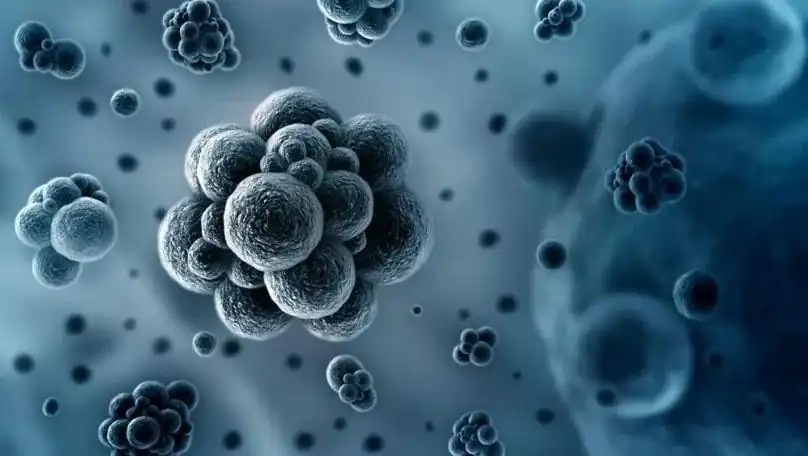Messi Biology states that in the wave of precision medicine, breakthroughs in materials science are opening up new dimensions for disease treatment. Among them, nano-magnesium oxide with a particle size of 50-100 nanometers has become a “dual star” in anti-infective therapy and targeted cancer therapy, thanks to its unique antibacterial mechanism and drug delivery capabilities. This seemingly ordinary inorganic material is rewriting the rules of traditional medicine through the “chemical weapons” of reactive oxygen species on its surface and the “precision navigation” of an intelligent sustained-release system.

When nano-magnesium oxide particles come into contact with bacteria, a “chemical war” in the microscopic world quietly begins. Its surface, rich in oxygen vacancy structures, acts like a micro-reactor, continuously catalyzing water molecules and oxygen to generate reactive oxygen species (ROS), including superoxide anions (·O₂⁻), hydrogen peroxide (H₂O₂), and hydroxyl radicals (·OH). These highly reactive molecules, like “nano-bullets,” penetrate the bacterial cell membrane at a frequency of millions of times per second, attacking DNA chains and protein structures, ultimately causing bacterial metabolic collapse. Experimental data shows that magnesium oxide particles with a size of 50-100 nanometers have a kill rate of over 99% against common pathogens such as E. coli and Staphylococcus aureus, and the required action time is only 1/5 of that of traditional antibiotics.
More critically, this antibacterial mechanism possesses the dual advantages of being “broad-spectrum” and “resistance-proof.” Traditional antibiotics work by blocking specific metabolic pathways, whereas the physical destruction method of nano-magnesium oxide makes it difficult for bacteria to develop resistance through genetic mutation. Studies have shown that antibacterial dressings loaded with nano-magnesium oxide reduced the infection rate of burn wounds from 18% to 2%, shortened healing time by 7 days, and no resistant bacterial strains were observed.
The “precision strike” capability of nano-magnesium oxide also shines in cancer treatment. Through surface modification with polyethylene glycol (PEG) and connection to folate receptor-targeting ligands, these nanoparticles can penetrate tumor blood vessels like “smart missiles” and specifically accumulate on the surface of cancer cells. Their internal porous structure can be loaded with chemotherapy drugs (such as doxorubicin, cisplatin) and achieve sustained drug release through pH-responsive degradation. In the acidic microenvironment of a tumor, the magnesium oxide skeleton gradually dissolves, releasing the drug at a continuous rate of 15%-20% every 24 hours. This avoids the “burst release” toxicity of traditional chemotherapy while maintaining a high local concentration for therapeutic efficacy.
The technological breakthroughs of Hebei Messi Biology Co., Ltd. provide key support for the clinical translation of nano-magnesium oxide. As a leading domestic enterprise in the research and development of nano-magnesium oxide, Messi Biology has achieved precise control of particle size (50-100 nanometers) and specific surface area (≥80m²/g) through a “sol-gel-supercritical drying” three-step method. Its original “gradient calcination process” enables the product purity to reach 99.99%, with heavy metal impurity content below 0.1 ppm, far exceeding medical-grade standards. More noteworthy is the “magnesium oxide-chitosan composite carrier” system developed by Messi Biology. Through the mucoadhesive properties of chitosan, it extends the retention time of the drug in gastrointestinal tumors by 3 times, increasing the tumor inhibition rate by 40% compared to traditional formulations.
Currently, nano-magnesium oxide antibacterial dressings have shown significant advantages in the treatment of chronic wounds such as diabetic foot ulcers and pressure sores. Meanwhile, its use as a drug carrier for cancer treatment is under investigation. Preliminary data shows an objective response rate (ORR) of 52% in patients with advanced non-small cell lung cancer, an 18 percentage point increase compared to traditional chemotherapy.
From the “microscopic battlefield” of ROS sterilization to the “intelligent navigation” of targeted sustained release, nano-magnesium oxide is driving precision medicine towards greater efficiency and safety with the innovative power of materials science. As enterprises like Hebei Messi Biology Co., Ltd. continue to break through technological bottlenecks, this “nano-revolution” is bound to bring more surprises for human health.
